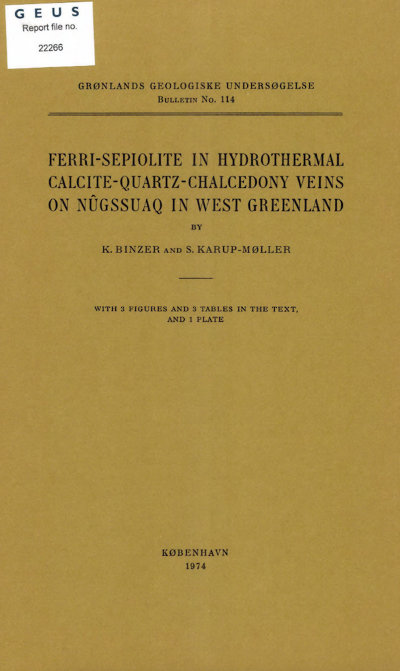Ferri-sepiolite in hydrothermal calcite-quartz-chalcedony veins on Nûgssuaq in West Greenland
DOI:
https://doi.org/10.34194/bullggu.v114.6655Abstract
Ferri-sepiolite has been found in low temperature fracture veins in volcanic rocks. The veins are composed of an early calcite-quartz generation and a late generation of calcite, quartz, chalcedony and minor amounts of ferri-sepiolite. The late generation developed simultaneously with deformation of the early minerals. Fluid inclusion studies on the associated calcite give a temperature of formation of the early generation of 65°-80°C. Secondary inclusions in calcite which may have formed simultaneously with the late generation homogenize at temperatures between 40 and 50° C. The mineral veins probably formed from circulating meteoric waters. Optical and other physical properties of the ferri-sepiolite together with X-ray crystallographic and chemical data of the mineral are compared with the similar properties of ferri-sepiolite from East Greenland.
Downloads
Published
Issue
Section
License
This article is distributed under a CC-BY 4.0 licence, permitting free redistribution and reproduction for any purpose, even commercial, provided proper citation of the original work. Author(s) retain copyright over the article contents.


